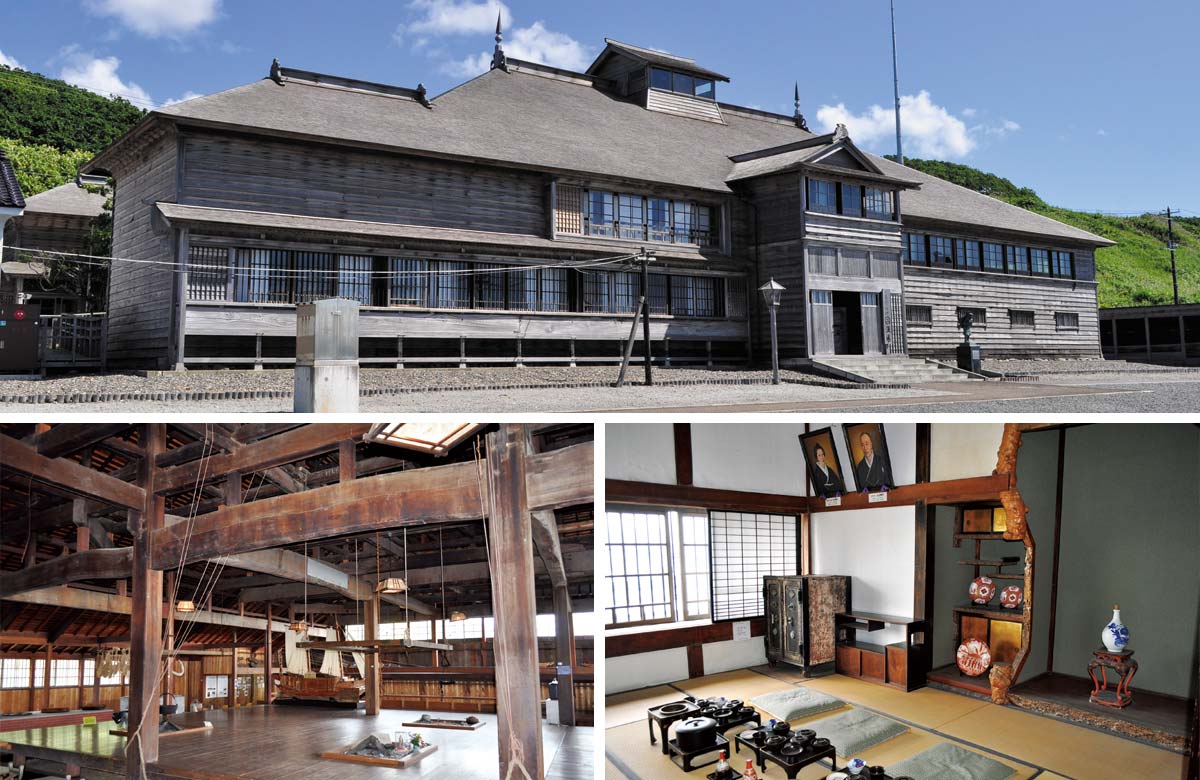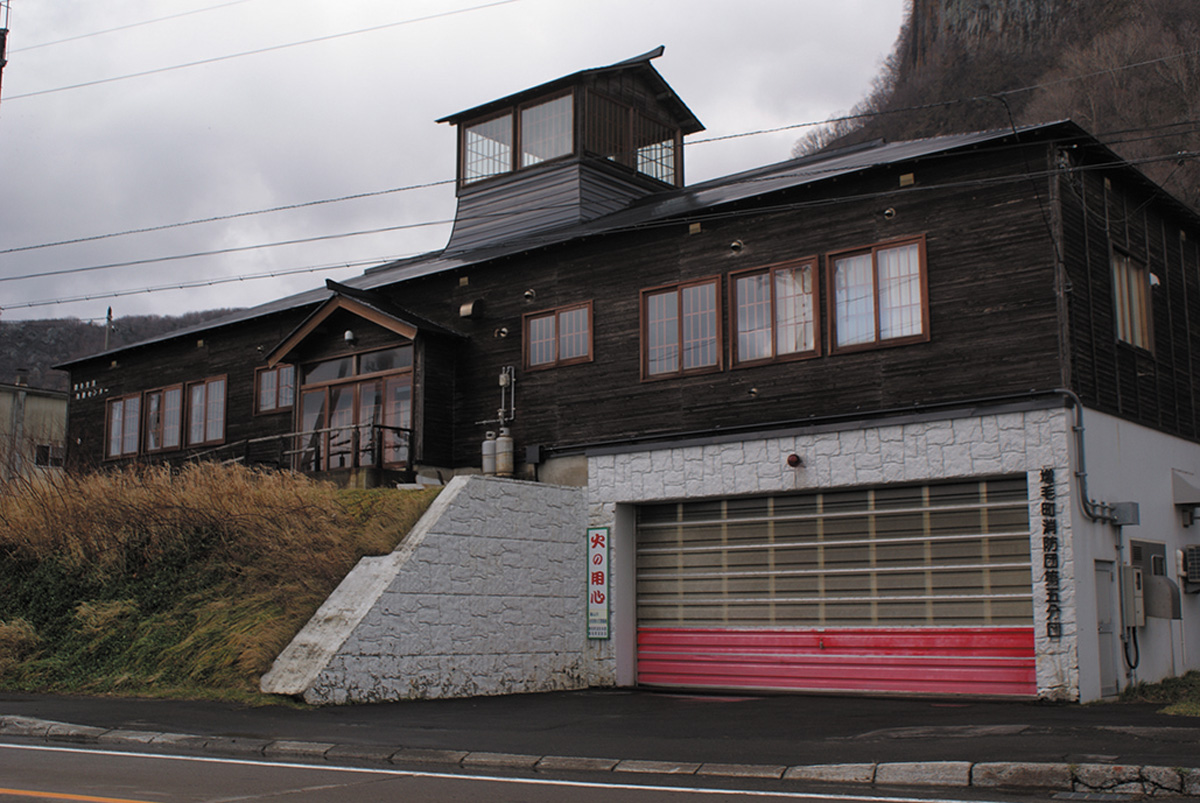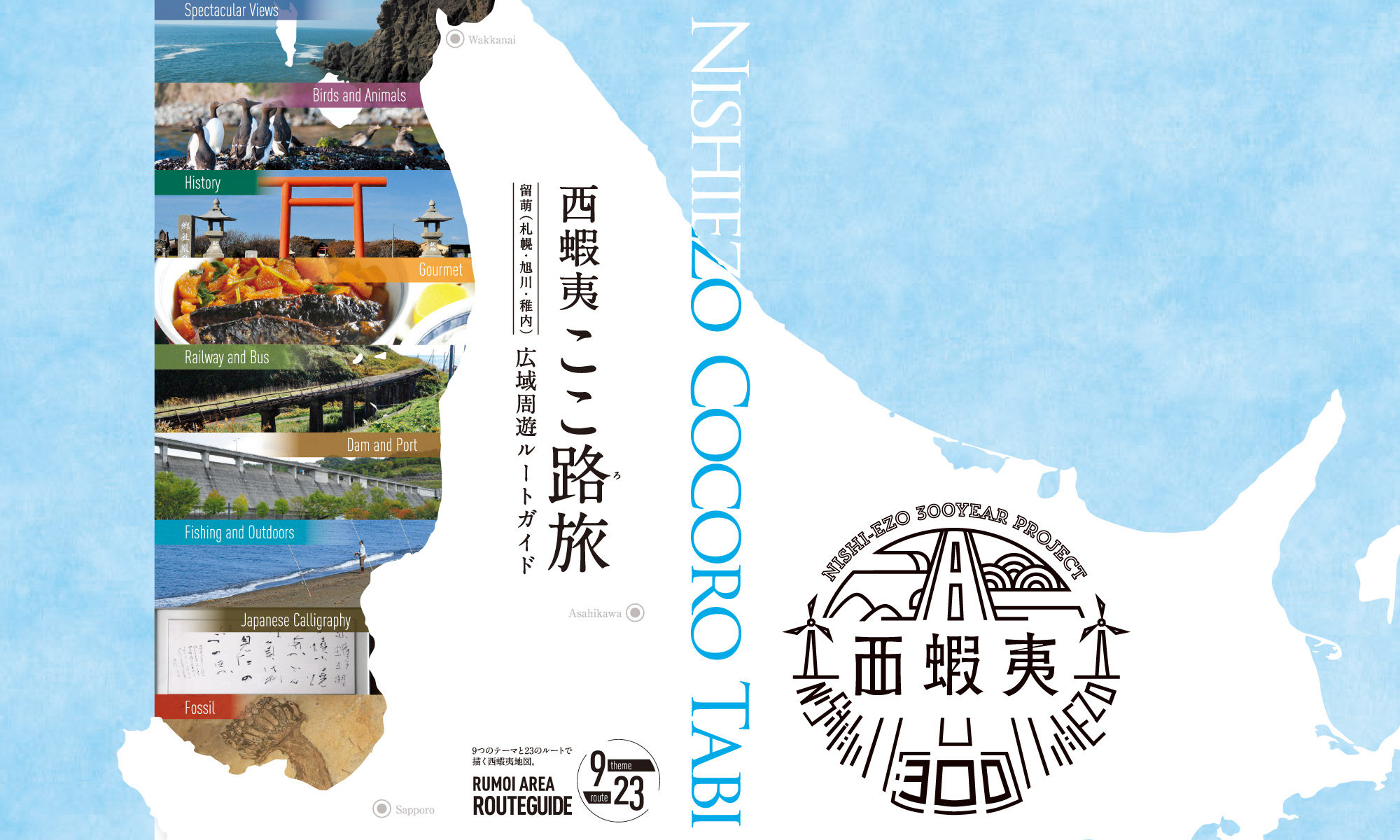The Dreams of Fishermen were Built on Schools of Herring.
Herring move along a route which begins in Esashi of southern Hokkaido, and stretches along the coast of the Japan Sea through Suttsu, Otaru, Atsuta and on up to Soya. In each city and town along this coast you can find signboards, which pay tribute to this “Herring Road”. The fishing lodges which stand along route 231 once housed fishermen who came with dreams of great fortune. One can just imagine the energy they brought to this region.

㊵Former Hanada Family Fishermen’s Lodge(Onishika Hirotomi 35-2, Obira)
Obira town purchased this lot and the National Cultural Property for 190 million yen. This was done over a period of three years, which ended with a completely renovated facility. The history and culture of the herring boom years continues to be relived at the Roadside Station Obira Banya.
This is the interior of the banya, which has 906 square meters of floor space. Most of the lumber used to build it was taken from the mountains nearby.
200 fishermen slept here during the peak fishing season of this large-scale operation. The prosperity of that era can be seen in the high quality of this structure.
Address / Onishika Hirotomi 35-2, Obira
TEL.0164-57-1411
Opening Months and Hours /
May-October, 9:30~17:00
November-April, 10:00~16:00
Closed / Monday (Open on Mondays from the 3rd week of June to the 2nd week of August), December 28 – January 15
Admission Fee / Adult \400, Junior high school and elementary school students \150
When we visit this, the Northernmost Nationally Designated Important Cultural Property of Japan, we can imagine the prosperity that came with the herring boom.
Kuki is a term used to describe large schools of herring, which swim into the shallows to spawn. The numbers were once so large that the ocean would turn whitish with herring milt. Because they migrate to the Japan Sea coast of Hokkaido from February to March, herring are known as the harbingers of spring. The herring of Hokkaido became well known from the Edo era, and the Meiji era saw a sharp increase in fish hauls. Great fortunes were amassed as owners of fishing vessels and gear came from Honshu and other areas of Hokkaido to set up fishing grounds. Hundreds of workers known as yanshu were employed in each of these operations.
Those owners built large lodges known as banya to accommodate their families, businesses and employees. The Hanada Banya, which stands in Obira, is one of the largest of these lodges and is the only such lodge to have been designated as an important cultural property of Japan.
Construction on this banya was completed in 1905. Space for the boss and his family was built adjacent to living quarters for the yanshu. The Hanada Banya was built in typical style with a large dining space, which is surrounded by platforms for sleeping. One gets a sense of the prosperity of banya owners through the luxurious style of these buildings. A goten, or “herring palace” is a term used to describe the private mansions built by herring bosses and are not to be confused with the communal living style of banya.
㊳Former Ikeda Family Fishermen’s Lodge(Teuri Tomiiso, Haboro)
This lodge was built on Teuri Island between 1901 and 1902 on. It was once used as a Youth Hostel but now it is not open to the public.
㊴Former Fujita Family Fishermen’s Lodge(Onishika Hirotomi 90, Obira)
This banya is located about 1 kilometer away from the Hanada Banya. It was built at the end of the Meiji era and now houses the Fujita Marine Products shop and business, which is well known for its smoked octopus.
㊷Seki Family Fishermen’s Lodge(Reukecho 24, Rumoi)
This banya stands on National Route 231, about 100 meters south from the Engan Reuke Ikku bus stop. It was built in year 10 of Meiji (1877) and is still used as a private residence. Be advised that this is private property and as such can only be viewed from outside the premises.
㊸Former Tanaka Family Fishermen’s Branch Lodge(Afun, Mashike)
The remains of this lodge are located 6 km out of Rumoi on the way to Mashike. The lodge building itself was moved to Spain in 1994 and the remaining foundation can only be viewed from outside the premises.

㊶Former Rumoi-Saga Family Fishing Ground(Reukecho, Rumoi)
The Saga banya is located in Reuke, Rumoi along National Route 231. The area where ground herring was dried and the galvanized iron-clad warehouse can be seen to the left. A boat shed and the Inari Shrine stand on the hill behind.
The hearth where herring was boiled can be clearly seen on the shore across the highway from the banya.
The 3,745 items of fishing tackle stored here were designated as Important Tangible Folk Cultural Properties of Japan. The site was chosen as a Registered Historical Property of Hokkaido. The grounds are temporarily open to the public in the summer.
Address / Reukecho, Rumoi
TEL.0164-42-0435(Rumoi City Education Board)
This site can only be viewed from outside the premises.
A Key Industry – What does this historic spot tell us about herring fishing?
The reason the herring boom, which lasted from the Edo era (1603~1868) to the beginning of the Showa era (1926~1989), was the basis of so much prosperity is something more complex than simply the netting and transporting of fish. Rather than food, herring was more importantly used as fertilizer for cotton and the mulberry trees, which were raised to feed silkworms for silk. A huge workforce was hired to net the herring, and then boil them in huge cauldrons to make herring meal. This meal was then shipped throughout Japan. The herring industry was key to the financial foundation of Hokkaido.
In order to understand the scale of the herring boom era one must visit the Saga Family Fishing Grounds in Reuke, Rumoi. It is an invaluable representative landmark of the herring boom era in Hokkaido. This complete fishing site is composed of the banya, the galvanized iron warehouse, a boat shed, a net shed, the passage where fresh herring were temporarily stored, and the Inari Shrine. Along the coast across the road, you can still see where the hearth for boiling herring was and the well-preserved boat launch. The over 3500 items of fishing tackle stored here were designated as Important Tangible Folk Cultural Properties of Japan. This site was also recognized as Heritage of Industrial Modernization by the Ministry of Economy.

㊺Sengoku-gura
This warehouse was built with imposing solidity. It stands slightly toward the sea from the (former) Maruichi Honma mercantile.
(left) The boat that is displayed inside was designed in the Mashike signature darumahagi style. The paint is vivid even still on this well-preserved fishing boat of yore.
Address / Inabakaigancho 53, Mashike
TEL.0164-53-1050 (Kunimare Sake Brewery)
Open hours / 10:00-17:00
Admission Fee / Free
Closed in winter
The (former) Maruichi Honma Family left a legacy of Herring Fishing
Murayama Denbei became a merchant after arriving at Matsumae from Noto no Kuni (Ishikawa Pref.). In 1750 he became a contractor and opened fishing grounds in Rumoi and Mashike. Rumoi and Mashike then entered into an era of unprecedented prosperity supported by the herring boom. Many people were drawn to the prominent fishing grounds in Mashike, which then became the center for commerce in Nishi-Ezo.
The Maruichi Honma family amassed considerable resources during this period and continues to be a prominent influence in Mashike today. The Kunimare Sake Brewery carries on the family business legacy, which once also included clothing and variety goods. The Honma family also dealt in the herring industry; Sengokugura was their warehouse. It once housed fishing tackle but when the port was enlarged in the Taisho era, it was moved to its current location. The exact date of construction is unclear but it is estimated to be around 100 years ago. Sengokugura is open to the public for free observation in the summer only. A fishing boat and tackle is on display inside. There is a seasonal café there and the large space is used as an event hall.
㊹Former Ishida Family Fishermen’s Lodge (Afun, Mashike)
When you turn left off National Route 231 onto Hokkaido Route 94, you will see a red-roofed banya. It was built in the middle of the Meiji era and is still used as a private home. It can only be viewed from outside the premises.
㊻Former Date Family the Secondary Fishermen’s Lodge(Bekkari, Mashike)
The remains of this banya are located near the Engan Bekkari bus stop, or a 15 minute walk away from the Bekkari fishing port. It was built in 1931 and is the current location for Ihara Marine Products. It ca only be viewed from outside the premises.

㊼Former Takahashi Family Fishermen’s Lodge(Ofuyu 43-1, Mashike)
This banya is located on the boundary between Ofuyu, Mashike and Hamamasu, Ishikari. It has been remodeled as the community center of Ofuyu and also houses the fifth division of the Mashike fire department. It can only be viewed from outside the premises.
This is the view from the outside of the (former) Takahashi Family banya/Ofuyu Community Center. The firehouse garage beneath the staircase is an interesting feature of this remodeled banya.

